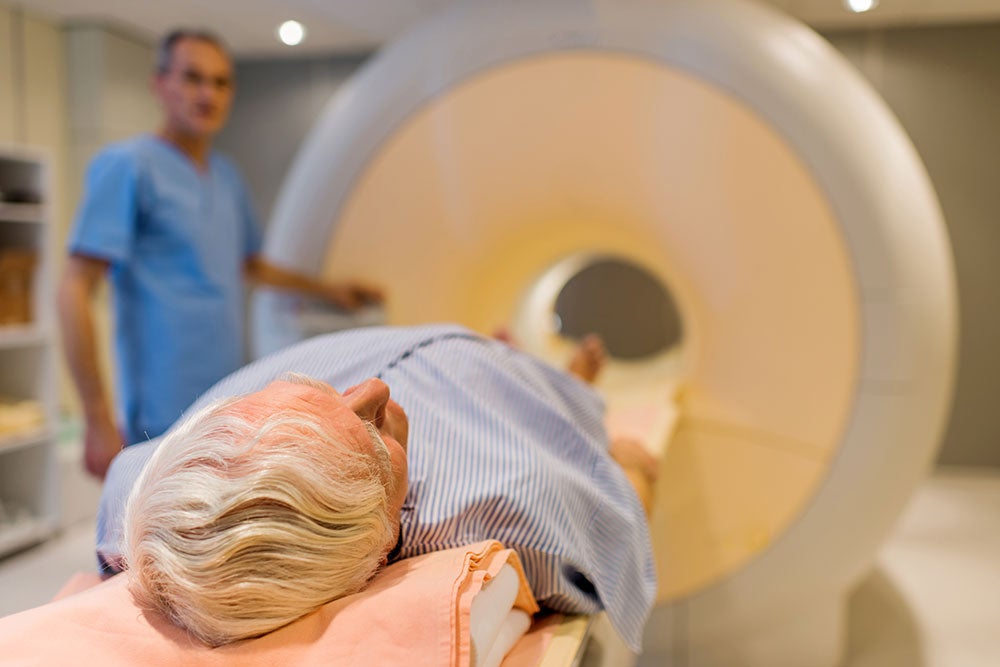How Do I Choose a Treatment for Prostate Cancer?

Some prostate cancers are slow-growing and not need treatment while others can be aggressive and life-threatening if not treated. When found early, prostate cancer has a high cure rate. Your cancer treatment plan will depend on your age, overall health, and how aggressive or advanced your prostate cancer may be. Some general options include the following, based on the type of prostate cancer:
Very low and Low-risk prostate cancer
Active Surveillance (continued monitoring but no immediate treatment) in most men or treatment in younger and healthy men with longer life expectancy who prefer treatment.
Intermediate risk prostate cancer
Local therapies like surgery to remove the prostate or treatments that destroy prostate cancer without removal like radiation-based options.
High-risk prostate cancer
Surgery or radiation-based options with a possibility of requiring a combination of treatments to increase the likelihood of cure (e.g. surgery plus radiation or radiation plus hormonal therapy).
Metastatic or advanced prostate cancer
Prostate cancers that have already spread to other parts of the body usually require treatments that treat the whole body, which includes medications like hormonal therapy, immunotherapy, or chemotherapy. There may still be a role for other treatments like radiation or surgeries to reduce symptoms of the cancer or manage complications.
Surgical options for Prostate Cancer
Surgery for prostate cancer can be performed in different ways but entails removal of the prostate and often the lymph nodes that drain the prostate since this is typically one of the first places it can spread. Over the past 20 years, minimally-invasive surgery has become the most common way to remove the prostate with robotic surgery being the most common treatment for prostate cancer in the U.S. accounting for about 90% of prostatectomies (prostate removal for cancer). The surgery is performed through 4 or 5 small incisions using a scope and small robotic instruments controlled by the surgeon to minimize pain and blood loss in addition to reducing other side effects of surgery, and in most cases patients can go home the same day. The robotic prostatectomy surgeons at Mount Carmel have performed thousands of such surgeries and are the most experienced prostatectomy surgeons in Ohio and among the most experienced in the world.
Radiation Therapy for Prostate Cancer
We offer state of the art radiation therapy options including intensity modulated radiation therapy and stereotactic body radiotherapy. Intensity-Modulated radiation therapy (IMRT) is an advanced technology available at Mount Carmel which shapes the radiation beams to the prostate and minimizes radiation to nearby organs. The CyberKnife is used to deliver stereotactic body radiation therapy (SBRT) at Mount Carmel St. Ann’s Hospital. The CyberKnife uses a robotic arm to track and treat the prostate with greater precision. This also results in less radiation to nearby organs and reduces the treatment time to just 5 visits. CyberKnife is available in Central Ohio only at Mount Carmel St. Ann’s and is not offered at any other nearby facility.
Other options
Surgery and radiation are by far the most common treatments for prostate cancer and the most studied, but less common or newer treatment options also exist. Some treatments may still be new or experimental and only available on clinical trials or at select centers in other cities or countries, so there may be less information about their efficacy or side effects as compared with standard treatments. Ask your Urologist or Radiation Oncologist about these treatments if you are interested in learning more. Some patients may choose not to treat their prostate cancer if it is unlikely to spread or become life threatening during their remaining lifetime, and some patients may choose to use hormonal therapy long term to control but not cure the cancer. Since every patient’s situation is different, discussing your options with your healthcare providers will help you make the best decision for you.

How do I choose between different treatment options?
Most men with early-stage prostate cancer will have the options of surgery to remove the prostate or radiation. Some men may be too frail or sick to have surgery while some may have conditions that would increase the side effects of radiation as compared with surgery (e.g. enlarged prostate causing symptoms or some bowel conditions), but most men will be candidates for either treatment. Deciding between the two is therefore usually left to the patient to decide as it is largely a matter of preference rather than one being “better” than the other. Some individual patient factors may tilt the scale in favor of one or the other, so discuss your options with your doctors to help you decide.
Some common factors that men use to decide between surgery and radiation include side effects they are more or less comfortable with given that the side effects of surgery and radiation are different. Some men feel strongly about wanting the cancer physically removed from their body (surgery) while others are uncomfortable with the idea of having surgery or general anesthesia. You may also want to discuss secondary options after surgery or radiation since some cancers might need combination treatment if the initial treatment is not curative. Your specialist will be able to discuss these factors with you to help you make your decision.
Mount Carmel is a proven leader in the detection and treatment of prostate cancer thanks to its respected team of recognized experts. Learn more about Mount Carmel’s Prostate Cancer Program or make an appointment to see one of our experts by contacting our Cancer Patient Navigators at614-546-HOPE (4673).
